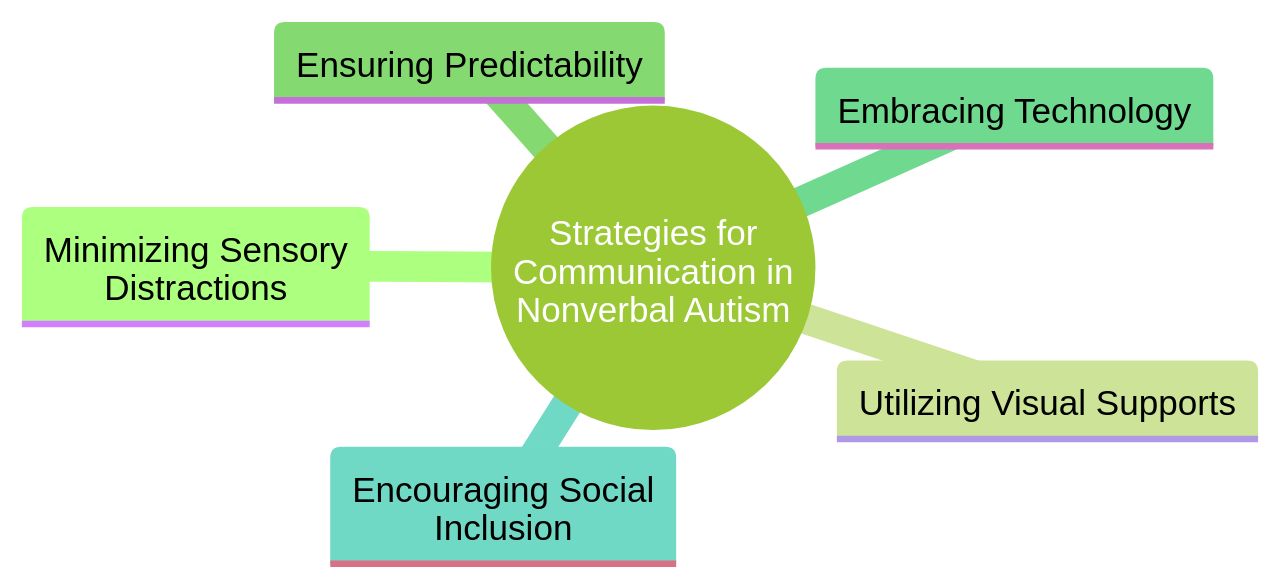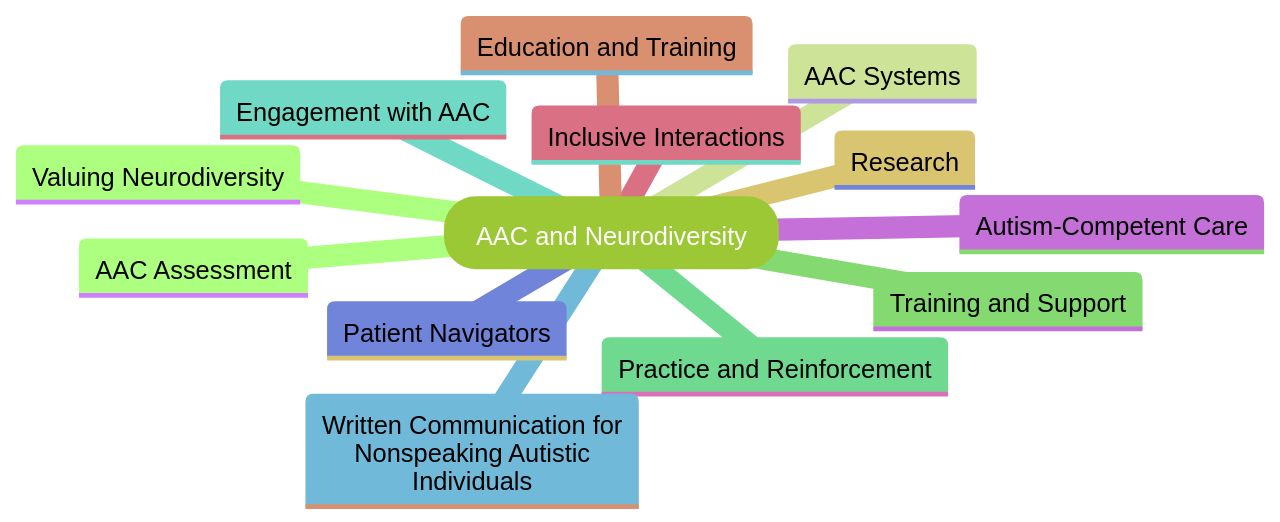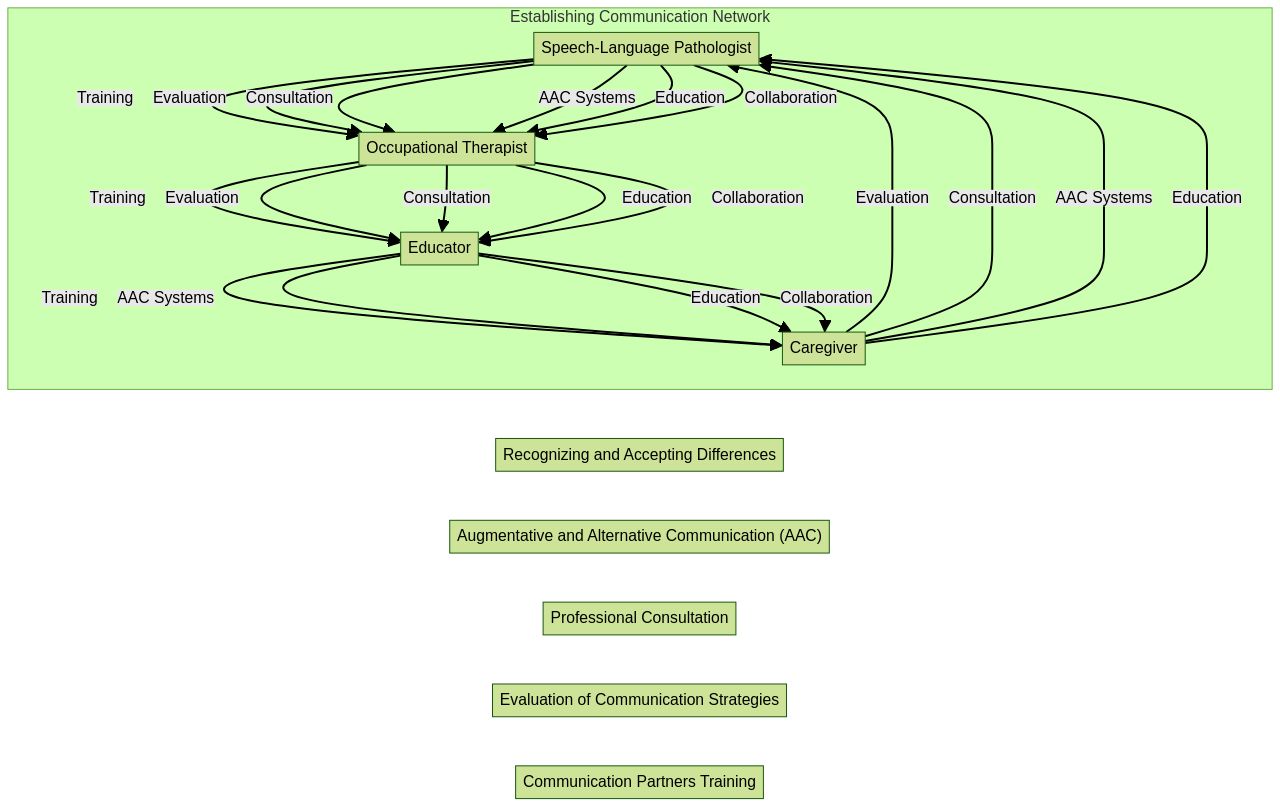Introduction
Understanding Nonverbal Autism: Unlocking Communication and Empowering Individuals
Autism can sometimes limit individuals' ability to communicate through spoken language. However, this doesn't mean they lack communication skills.
Alternative communication methods, such as sign language, visual aids, or innovative devices can be effective tools. Augmentative and Alternative Communication (AAC) systems, ranging from simple picture cards to sophisticated electronic speech generating devices, are often employed to aid communication for non-speaking individuals.
In a groundbreaking study by researchers at the University of Virginia, a new perspective on nonverbal autism emerged. They discovered that a significant proportion of nonspeaking autistic individuals demonstrated literacy competencies.
This finding underscores the potential of written communication in unlocking educational, employment, and social opportunities for these individuals. This article dives into the world of nonverbal autism, exploring strategies for creating a communication-friendly environment, implementing AAC, promoting social interaction and engagement, and building a supportive communication team. By understanding nonverbal autism and empowering individuals with effective communication tools and support, we can ensure their well-being and enhance their ability to express themselves, engage in social interactions, and participate in various life areas. Join us on this journey as we explore the power of communication in the lives of individuals with nonverbal autism.
Understanding Nonverbal Autism
Autism can sometimes limit individuals' ability to communicate through spoken language. However, this doesn't mean they lack communication skills.
Alternative communication methods, such as sign language, visual aids, or innovative devices can be effective tools. For instance, AAC (Augmentative and Alternative Communication) systems, ranging from simple picture cards to sophisticated electronic speech generating devices, are often employed to aid communication for non-speaking individuals.
A study by researchers at the University of Virginia brought a new perspective to the understanding of nonverbal autism. They discovered that a significant proportion of nonspeaking autistic individuals demonstrated literacy competencies.
This finding underscores the potential of written communication in unlocking educational, employment, and social opportunities for these individuals. Supporting this, a case study of Laura Kasbar's nonverbal autistic son showed the importance of not underestimating the capabilities of nonverbal autistic individuals. Despite initial setbacks, Kasbar's relentless pursuit of alternative communication methods for her son led to significant progress. Overall, understanding nonverbal autism is vital for developing effective strategies to support these individuals and for enabling their ability to express themselves, engage in social interactions, and participate in various life areas.
Creating a Communication-Friendly Environment
Creating an environment conducive to communication is crucial for individuals with nonverbal autism. Here are some valuable strategies:
1.
Minimizing sensory distractions: By reducing excess noise, bright lights, and other sensory stimuli, we can prevent overwhelming or distracting individuals with autism, who often experience sensory differences. This was highlighted in the Albiz Foundation North Macedonia's push for inclusive classrooms for autistic children, which sometimes posed sensory challenges.
- Utilizing visual supports: Visual aids like schedules, cues, and aids can make instructions more comprehensible to individuals with nonverbal autism.
This was demonstrated when 10-year-old Joshie used an electronic tablet to communicate, marking a life-changing moment for his father, Dan Harris. 3.
Ensuring predictability: Establishing consistent routines and clear expectations can foster a sense of security and understanding. This approach mirrors the strengths-based approach theorized by social worker Bertha Reynolds, who emphasized focusing on individuals' strengths over their flaws.
- Embracing technology: Technology can play a pivotal role in communication. The story of Jordyn Zimmerman, a nonspeaking autistic woman who found her voice through the Proloquo2Go app, is a powerful example. 5. Encouraging social inclusion: Social inclusion not only fosters acceptance but can also lead to practical solutions. A case in point is the sensory room established in a North Macedonian elementary school, which was made possible due to the combined efforts of parents, teachers, and the local community.

Implementing Augmentative and Alternative Communication (AAC)
Augmentative and Alternative Communication (AAC) is a powerful tool for supporting nonverbal autistic individuals in expressing themselves. The process begins with an assessment by a speech-language pathologist or an AAC specialist to evaluate the communication needs of the individual.
This allows for the selection of an AAC system that aligns with their abilities and preferences, whether it be low-tech like picture boards or high-tech like speech-generating devices. Training and support are critical in the AAC journey.
Comprehensive instruction is provided to the individual, their communication partners, and caregivers to ensure effective usage of the AAC system. Practice and reinforcement are key for mastering AAC skills.
Regular engagement with the AAC system encourages progress and success in communication. Moreover, a recent study from the University of Virginia advocates for the exploration of written communication for nonspeaking autistic individuals.
The study revealed that many such individuals are literate, suggesting they could express themselves through writing, even without formal literacy instruction. Furthermore, patient navigators can be instrumental in creating and accessing autism-competent care, improving processes for both inpatient and outpatient care in a medical facility. In addition, understanding that people interact differently with the world is the first step in fostering more inclusive interactions. This can be achieved by focusing on education and training, tapping into the latest research, and consulting specialists in the field. Remember, everyone has their unique communication preferences. By acknowledging and accepting these differences, we create an environment that values neurodiversity, ultimately improving the well-being of every member of our society.

Promoting Social Interaction and Engagement
Enhancing communication and social engagement is critical for individuals with nonverbal autism. Below are some effective strategies:
1.
Harnessing Technology: The use of technology can be transformational in facilitating social interaction. For instance, visual aids such as picture boards or electronic tablets can help individuals understand social cues and situations.
The story of Joshua, a 10-year-old boy, who used pictures on a tablet to communicate, exemplifies the life-changing potential of these digital tools. 2.
Encouraging Peer Interactions: Inclusive educational settings and structured social activities can offer abundant opportunities for individuals with nonverbal autism to interact with their peers. This fosters a sense of community and enhances their social skills.
- Parental Mediation in Early Intervention: Parents can play a pivotal role in improving social communication in young children with autism.
Mediated learning, guided by parents, can significantly enhance their child's social communication development. 4.
Social Skills Training: Specialized training programs targeting communication and social interaction skills can be beneficial. These programs should be tailored to suit the unique needs and strengths of individuals with nonverbal autism. 5. Written Communication: Studies suggest that a significant number of non-verbal autistic individuals can express themselves through writing. Thus, exploring written forms of communication can unlock a myriad of educational, employment, and social opportunities for them. 6. Parallel Activities: Research indicates that activities alongside the child's activities, or lateral tutorship, can complement traditional joint-interactive activities. This can be an effective addition to early education for autistic children.

Building a Supportive Communication Team
For individuals with nonverbal autism, it is essential to establish a functional communication system. Here's how you can do it:
1.
Teamwork: Encourage a collaborative environment involving professionals such as speech-language pathologists, occupational therapists, educators, and caregivers. This ensures a comprehensive approach to supporting communication.
- Communication Partners: It's essential to train and educate communication partners, including family members, teachers, and peers, about effective communication strategies and how to provide optimal support.
- Consistent Evaluation: Regularly monitor the effectiveness of communication strategies, making necessary adjustments based on the individual's evolution and changing needs.
- Professional Consultation: Seek advice from professionals experienced in supporting individuals with nonverbal autism for additional resources and guidance.
Nonverbal children with autism, also known as nonverbal autism, rely on augmentative and alternative communication (AAC) systems to express their needs and wants, develop relationships, and participate in academic instruction. Examples include low-tech systems like manual signs or picture cards and high-tech systems like electronic speech-generating devices. Exploring written forms of communication, such as tablet-based games, can uncover literacy competencies in individuals with nonverbal autism, advocating for the use of innovative assessment methods. It's also important to acknowledge that individuals with nonverbal autism experience and interact with the world in unique ways, and promoting an environment that acknowledges and accepts these differences is vital for individuals with nonverbal autism. Autism is a set of lifelong differences in how people communicate, interact, socialize, and behave. The estimated worldwide prevalence of autism is at least 1%, with the rate of diagnosis increasing steadily in recent years due to better awareness, increased screening, and more accuracy in diagnosis. Remember, understanding nonverbal autism and neurodivergence can help improve patient care and communication, as autistic adults with nonverbal autism are about 30 times less likely than children to be diagnosed.

Conclusion
In conclusion, understanding nonverbal autism is crucial for empowering individuals with effective communication tools and support. Alternative methods like sign language, visual aids, and innovative devices can unlock communication abilities for those with limited spoken language. The University of Virginia's groundbreaking study revealed that many nonspeaking autistic individuals have literacy competencies, highlighting the potential of written communication in opening educational, employment, and social opportunities.
Creating a communication-friendly environment is key. Strategies such as minimizing sensory distractions, utilizing visual supports, ensuring predictability, embracing technology, and encouraging social inclusion enhance communication for individuals with nonverbal autism. Implementing Augmentative and Alternative Communication (AAC) systems is essential.
Assessments help match individuals with suitable AAC systems, while training and support ensure effective usage. Promoting social interaction and engagement is vital. Harnessing technology, encouraging peer interactions, parental mediation in early intervention, social skills training, exploring written forms of communication, and incorporating parallel activities all contribute to enhancing social skills and community inclusion.
Building a supportive communication team involves collaboration among professionals and educating communication partners on effective strategies. By understanding nonverbal autism and implementing these strategies, we can enhance the well-being of individuals with nonverbal autism. Valuing neurodiversity and creating inclusive environments improve the well-being of all members of society.




